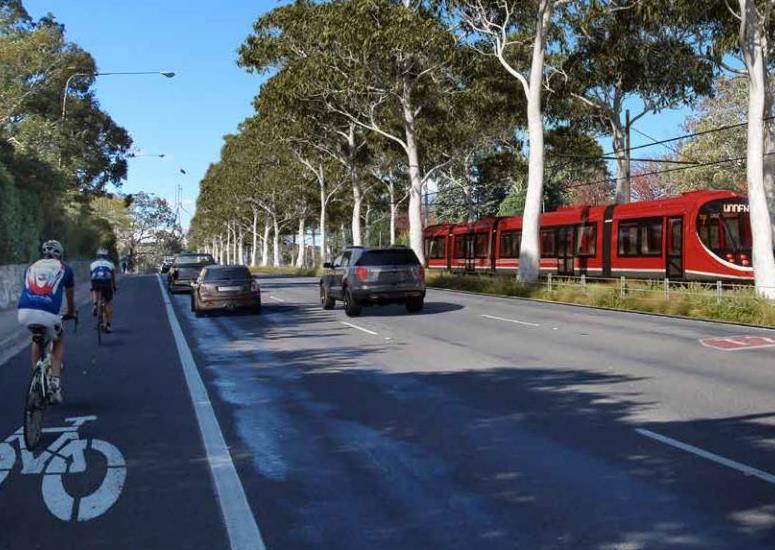
An artist’s impression of light rail on Adelaide Avenue. Image: ACT Government.
Year in Review: Region Media is revisiting some of the best Opinion articles of 2022. Here’s what got you talking, got you angry and got you thinking in 2022. Today, Ian Bushnell argues light rail is coming, it’s time everyone gets on board.
This decade will be a significant and important one for the future of Canberra, particularly for its south side where the extension of light rail to Woden will be accompanied by new development.
Despite multiple elections, an acceptance from the Canberra Liberals that the issue is settled, and now an expectation from people in the Woden Valley that light rail is coming, there is still commentary opposing the project and the new housing and commercial opportunities it will bring.
While Adelaide Avenue and Yarra Glen are unlikely to replicate Northbourne Avenue, being a different urban context, the theme of most of the commentary is stridently anti-development, fearing green space and views will disappear in a mess of poorly designed multi-unit buildings.
Basically, there are some who see light rail as a Trojan horse for rapacious developers in cahoots with the government.
But it’s a narrative full of stereotypes that, at this stage of the issue, is not only passe but unhelpful.
The government has made no secret that as well as providing clean, efficient public transport, light rail drives development and creates the synergies for people to have homes near the city and for the accompanying businesses that will serve those new residents.
That economic activity will be a good thing for Canberra, providing homes and creating jobs that all go to supporting the lifestyle and services Canberrans enjoy.
Having said that, there are considerable engineering challenges for getting light rail to Woden, across the Lake and through the Parliamentary Zone and down Adelaide Avenue.
And the development that it will encourage will require careful and sensitive planning to provide density and height levels that do not create the kind of concrete jungle that will negate the natural amenity and those views to the mountains.
Deakin and Yarralumla residents are rightly concerned for their Garden City suburbs, but they also cannot be enclaves that remain inaccessible to people who want to live close to the city.
While the deal that partitioned the North Curtin Horse Paddocks between the ACT and the Commonwealth may have rankled, that amount of land sitting between the City and Woden could not have remained untouched forever.
Those who oppose any development in the southern corridor are really banishing people to the outskirts of town where they will likely face higher costs and be less connected to what they need.
It is worth noting that the median house price in Canberra is more than a million dollars and rising. For many, buying a townhouse or apartment is now their only chance of homeownership.
Canberra also has the highest rents in the country and perpetually tight vacancy rates.
The Territory needs to build more housing that is in reach of people to buy and rent and where they want to live.
Simplistic calls for the government to flood the market with land for new housing estates ignore a host of fiscal, logistic, environmental and political issues that it has to juggle.
There are many factors that influence house prices, and some are beyond the ACT Government to control, such as tax settings and the cost of money.
This doesn’t mean the government gets off scot-free. It and the Planning Authority are responsible for ensuring properly planned sustainable development.
They need to be held to account so they live up to that responsibility and so that the light rail project and the accompanying development can be the best that it can be.
Hopefully, the outcome of the planning system review will help.
Canberra is a city with special qualities and needs, but it remains a growing city and one that cannot be kept in aspic.
The challenge for its government, developers and citizens is to manage that growth so it doesn’t destroy the very things that we love about it.
Light rail is coming, so it would be best to get on board and be involved in making sure it works to everybody’s advantage.




















